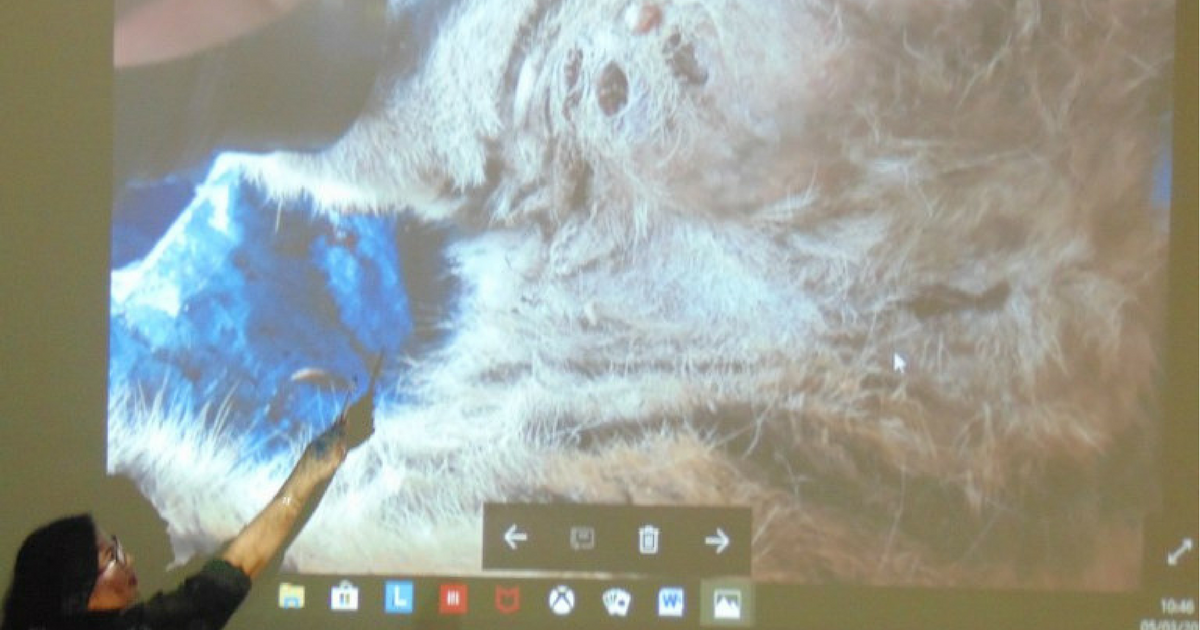Conservation authorities in Indonesia are investigating suspicions that the illegal trade in tiger parts drove the killing of one of the rare big cats earlier this month.
The male Sumatran tiger (Panthera tigris sumatrae) was killed on March 4 by residents of Hatupangan village in Mandailing Natal district, North Sumatra province, who had labeled it a nuisance and a menace to the village. The residents then strung up the tiger’s body in the village hall for display.
But an autopsy carried out soon after found that several body parts had been cut from the tiger’s corpse, likely destined for the illegal trade in wildlife parts.
WARNING: Graphic image of tiger’s autopsy below

The tiger had been spotted roaming near the village since February, and villagers believed it was a supernatural creature. On Feb. 16, the big cat attacked a hunting party that had embarked into the forest to track the animal. Two people were reported injured in the incident, in which the tiger managed to escape.
A team from the provincial conservation agency, the BKSDA, arrived the following day to caution the villagers against trying to capture of hurt the tiger, which is a protected species under Indonesian law. The officers did not manage to find the animal, and so decided to remain in the village.
A few days later, the villagers reported another tiger sighting and asked the conservation officers to kill the animal. The BKSDA said the villagers forced the team to give written approval that the villagers could kill the tiger to prevent it from hurting another human. The villagers also told the team to immediately leave and to never return.
“The team received verbal abuse and one of our vehicles was damaged by the people,” the agency said later in a statement.
The BKSDA team subsequently sought help from the district police. Local authorities and the villagers agreed on March 2 to set a trap to capture the tiger.
On the morning of March 4, the villagers found the tiger sleeping under a resident’s stilt house. They stabbed the animal multiple times with a spear, killing it. It was also reported that local police officers shot the tiger with a stun gun.
“We told the villagers that the tiger is a protected animal, but they didn’t like our way of handling the situation,” said Hotmauli Sianturi, head of the North Sumatra BKSDA.
After managing to retrieve the tiger’s body from the village hall where it had been strung up, the BKSDA carried out an autopsy that showed several body parts missing. These included a fang, claws, and patches of skin from the head and tail.
Hotmauli said her agency was looking into the possibility that the tiger had been killed upon request from traders of wildlife parts. Tiger claws and fangs are highly prized in this illegal trade as symbols of potency and power. Hotmauli said her agency was working on the case with the provincial police.
The killing took place a day after global celebrations for the United Nations’ World Wildlife Day, whose theme this year was “Big cats: Predators under threat.” It was aimed at bringing attention to the alarming decline in the population of iconic species such as tigers, lions and leopards around the world.
Indonesia’s Ministry of Environment and Forestry said on March 5 that it would improve efforts to educate residents living near tiger habitats to protect the critically endangered species.
“The main point is to have everyone agree to protecting wildlife habitat areas,” Bambang Hendroyono, the ministry’s secretary-general, told reporters in Jakarta. “It’s become an important task for us to maintain the animals’ survival.”
The Sumatran tiger is a key conservation focus for the Indonesian government and wildlife activists; two other tiger subspecies native to Indonesia, the Javan tiger (Panthera tigris sondaica) and the Bali tiger (Panthera tigris balica), were officially declared extinct in 2003 due to poaching and habitat loss — the same threats stalking the Sumatran tiger today.
Habitat reduction has also resulted in more frequent cases of human-tiger conflict, and the problem is only set to worsen through the continued clearance of forests for plantations and roads. A series of road development projects currently planned by the government are expected to cut through Mount Leuser, Kerinci Seblat and Bukit Barisan Selatan national parks — all of which are home to Sumatran tigers.
Under Indonesia’s 1990 Conservation Act, the killing of protected species such as Sumatran tigers, or the trade or distribution of the animal or its body parts, carries a prison sentence of up to five years and fines of up to 100 million rupiah ($7,000). However, the illegal wildlife trade continues to flourish, as law enforcement against poaching is widely perceived as ineffective; perpetrators are rarely prosecuted, and when they are, they receive token sentences that are far lower than the maximum prescribed punishment. Conservationists have also pointed out the seeming impunity in the case of influential figures and officials involved in the illegal wildlife trade.
The latest incident marks the third reported wildlife killing by humans in the country this year, following the deaths of two orangutans in Kalimantan, the Indonesian part of Borneo.
This article was originally published on Mongabay. Read the original article here.





Reader Interactions